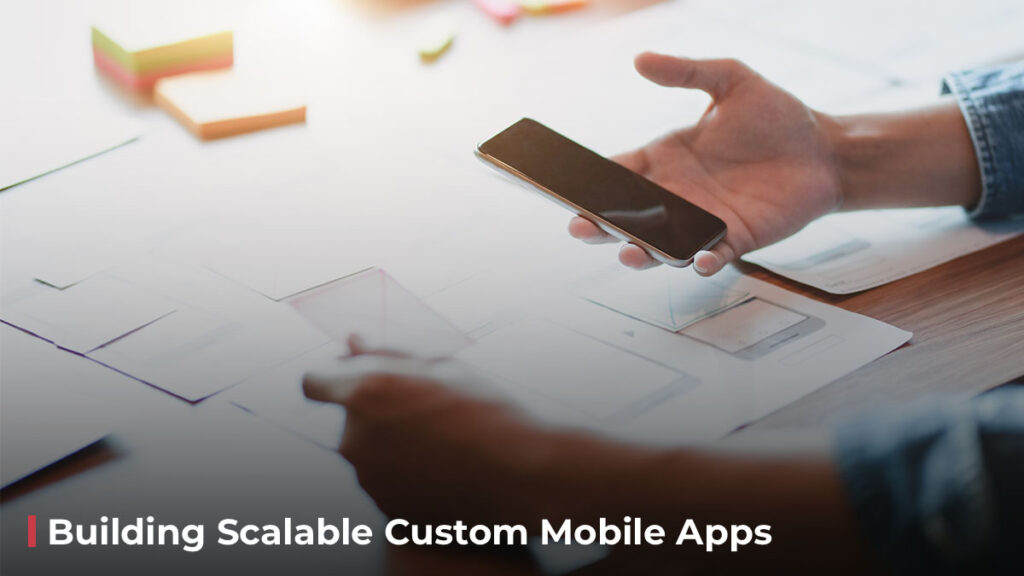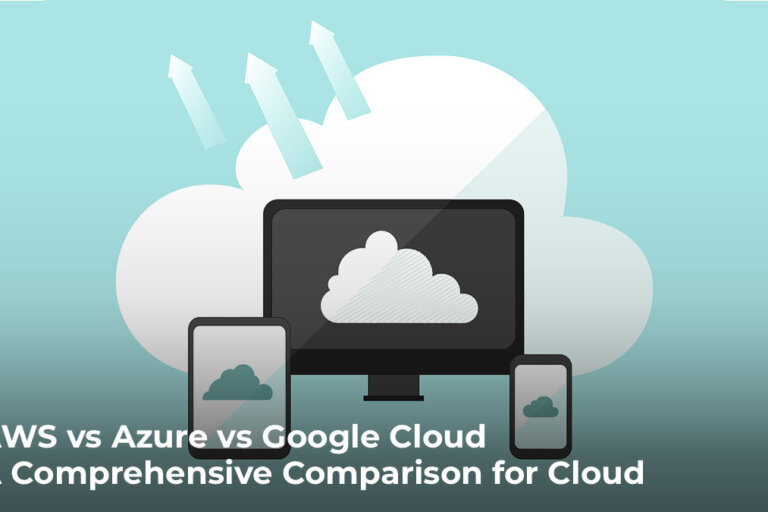Building Scalable Custom Mobile Apps: Key Considerations and Strategies

It’s common enough to build a custom mobile app. Businesses do it all the time, and it can solve so many specific problems.
Unfortunately, a lot of app design best practices seem to go out the window with custom apps, and it can create as many problems as it solves. It’s important to think about the long-term implications of how your app will run, and that is most obvious when you consider the scalability of your app.
Thinking About Scalability in Mobile Apps
In general, the desire to make a mobile app scalable is obvious. If you design an app and release it to the public, the general idea is that an increased user base creates more opportunities to generate revenue, create data, or otherwise glean benefits from your app.
Let’s move out of theoretical space to make this obvious. Angry Birds is a famous mobile game. It was created to make money, and it generates money by appealing to a wide user base. If more people play the game, the game makes more money, and that requires scalability. It’s easy.
But, it’s not always about money.
Let’s say a motor vehicle division wanted more data about who was driving in a state. They could create a mobile app that makes it easier for users to renew licenses, register vehicles, and take care of driving regulations in general. In this case, the value of increasing the user base is that the department gets more data. It’s not generating revenue, but scalability still increases the app’s value.
In any case, where you’re appealing to a wide user base, you need a scalable app that can handle the load.
Scalability Matters for Custom Apps Too
The deeper lesson here is that scalability is still important when you design a custom app that isn’t released to the public.
Consider an app that you design for your business that performs a specific function, like password management for internal company accounts. You don’t want anyone outside of the company to access this app, so your scalability concerns are limited.
Yet, even in this case, making a scalable app is still a good idea. Businesses grow, and needs change. If your app has scalability in its DNA, it’s much easier and more cost-effective to adjust the app and keep up with that growth. You may not need to design around a scale of millions of users, but your user base could still increase by 10 percent over a few years. In the case of a small or medium business, your user base could easily double.
How to Make Scalable Custom Mobile Apps
If you agree that scalability provides general value to app development, then the next question becomes inevitable. How do you make a scalable custom app?
App development is a large topic, and it’s impossible to condense everything into a single article. Still, we can narrow down a few best practices, strategies, and examples to form a basis. From there, you can adjust your own methods and more reliably bake scalability into all of your apps.
With that in mind, we’re going to explore four specific ideas that apply to scalability: modular architecture, cloud integration, load balancing, and performance optimization. These aren’t perfectly distinct categories. There is plenty of crossover from one idea to the next, but these pillars provide us with a strong footing to explore scalability in more specific, actionable terms.
Modular Architecture
Arguably, your most powerful technique in terms of scalability is modularizing your architecture. For the sake of clarity, this is a strategy where each significant component of the app is coded independently from the rest of the app. As an example, any feature in the app can operate independently from other features (especially for the sake of testing).
When an app is built this way, adjustments are much easier. You can improve scalability for specific services or functions while leaving others alone. It gives you more freedom in how you maintain the app over time, and the modular nature of the app makes any specific change or update less likely to create cascading problems with the rest of the app.
So, how do you make an app modular?
There are two generic ways to approach the idea. You can create feature modules or layer modules, and these ideas are not mutually exclusive.
Feature modules are exactly what you might imagine. Each feature in the app is built as a self-contained module, and the modules can ultimately connect together to make the whole app run. In terms of scalability, you can design feature modules so they only download on request. That way, users who might not be using specific features are not bogging down servers and bandwidth with unnecessary downloads.
Layer modules build an app according to an architecture where each layer is still independently coded and structured. An example architecture might include the following layers:
- Database
- Network API client
- Repositories
- User interfaces
- Styles
Each layer is necessary for app functionality, but you can build them so that changes to one layer do not directly impact the operation of the other layers. When adjusting your app for scale, this helps you zero in on layers that bear the most impact on resource limitations and choke points in your distribution system.
Cloud Integration
Another tool that insulates against scalability failure is cloud integration. At the surface level, the idea is pretty simple. When your app draws reliably from cloud resources, you can scale up app delivery and performance by increasing those cloud resources.
In other words, you can upgrade your cloud service tier whenever you need a boost in scale across the app.
In terms of designing cloud integration, it mostly boils down to your APIs. If you have a cloud provider in mind (or if you’re using in-house cloud servers), the cloud design will inform your APIs, but there is still a bit of generic advice that helps in most cases.
First, implement authentication and authorization early in your development process. Mostly, this gives you more time with these services to ensure they work efficiently and effectively. Inefficiency authentication/authorization will kill scalability.
Second, test extensively as you go. It’s classic advice for a good reason. You can consider a microservice architecture for the API server if you’re building a big backend system.
Load Balancing
Next up is load balancing. When you design with load balancing in mind, you can create inherent efficiencies in the app that certainly help when your user base grows.
There’s a pretty simple technique that goes a long way. Put backends close to the clients. It minimizes latency.
Additionally, you can use caching tools to improve effective connection rates through the app.
Cloud CDN is a great example. It allows caching speed which improves response times and minimizes the total resources for any cloud or server access request. As your user base grows, the value of caching grows too.
A third technique involves the reduction of connection lifetimes. By forcing rollover in connections, you reduce strain on popular services, as you won’t have users maintaining a connection they don’t need over long periods of time.
Performance Optimization
The last pillar of scalability is performance optimization. Obviously, optimized apps run more efficiently, and that helps servers perform at scale, so let’s skip to best practices.
First, make good use of app profiles. Baseline profiles and startup profiles allow you more control over startup, navigation, and app smoothness in general. You can tweak performance according to profiles, giving you a lot of room for optimization.
Next up is library management. Apps often need to access a range of libraries. If libraries are disabled until request (known as on-demand initialization), you save resources whenever the app launches. You also save resources during sustained app usage, as the app isn’t constantly accessing every library.
A few other best practices simply involve making decisions with optimization and scalability in mind. When utilizing performance APIs, you can inform your decisions with overall resource usage and scalability within the APIs themselves. The same applies to something like imaging. Vector drawables scale much better than many other image techniques. When that isn’t viable, using WebP, for instance, is more efficient when compared to BMP, JPG, or PNG.
Build Your Own Scalable App
These pillars of design can definitely get you on the right track. When you approach app design with scalability in mind, you’ll find that there are countless opportunities to succeed, and you will only benefit from that effort more over time. Contact us today if you to improve your current app or develop a new app from the ground up.












